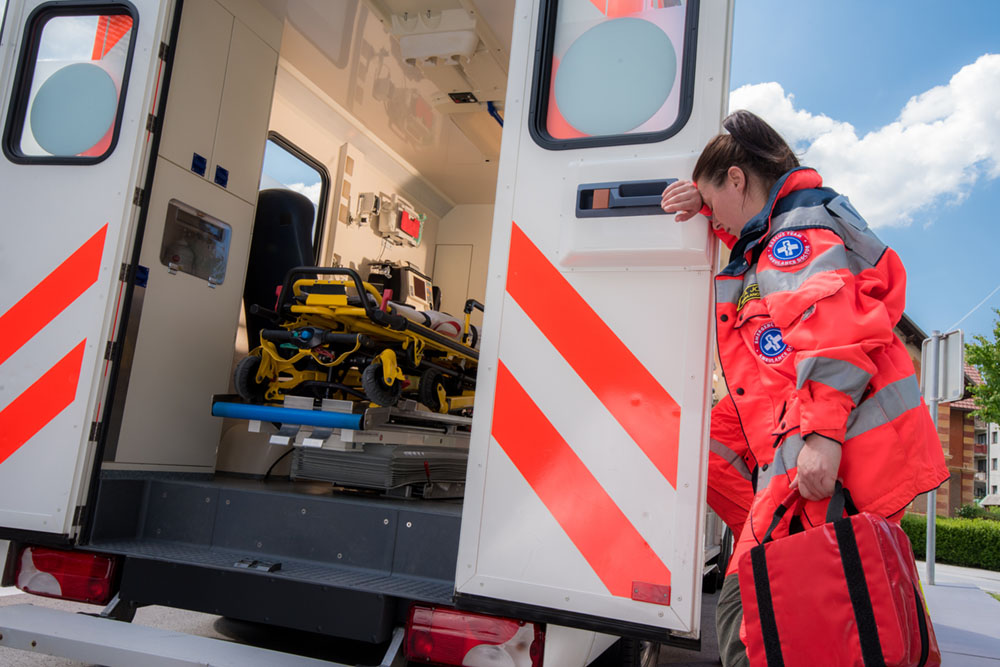Low pay, long work hours, compulsory overtime, and the stress of often walking into dangerous situations is taking a serious toll on America’s emergency medical responders, according to Salon. This is putting both EMTs and their patients at risk, and some workers are now being given body armor as their sole means of protection.
Across the country, the everyday violence directed towards EMTs has led to calls for improved working conditions and workplace violence legislation. Last week in Massachusetts, dozens of emergency medical responders gathered outside their employer’s headquarters to protest workplace issues, including low pay. And in late September, New York City medics rallied outside City Hall and called on Mayor de Blasio to close the long-standing pay gap between EMS employees and other uniformed workers like firefighters and cops.

In an industry where the average CEO’s salary is $16.1 million a year, up from $14.7 million just last year, EMS workers can make as little as $22,760 a year, or $11.38 an hour, according to the Department of Labor’s Bureau of Labor Statistics.
Along with the stress of low pay and violence, or perhaps because of it, these workers are also more likely to commit suicide than the average American.
According to a National Institute of Health research paper published in May 2019, national survey data indicates “that among Emergency Medical Technicians (EMTs), including firefighters and Paramedics, rates of suicide are significantly higher than among the general public. EMTs face high levels of acute and chronic stress as well as high rates of depression and substance abuse, which increase their risk of suicide.”
This epidemic has led to many workers and activists fighting for workplace violence legislation. The USW has been active in this push with its “Safe Jobs Now” campaign, a nationwide action to lobby for the Workplace Violence Prevention for Health Care and Social Service Workers Act (H.R. 1309/S. 851). This bill would direct the Occupational Safety and Health Administration (OSHA) to ensure workplaces develop and implement much needed violence prevention plans.
You can learn about this campaign to help stem the epidemic of workplace violence in health care and how you can get involved by clicking here.
